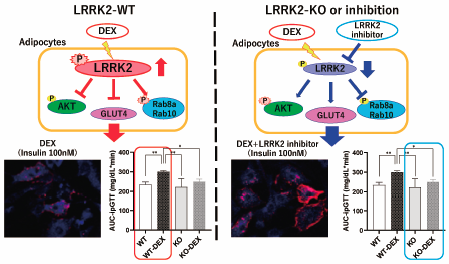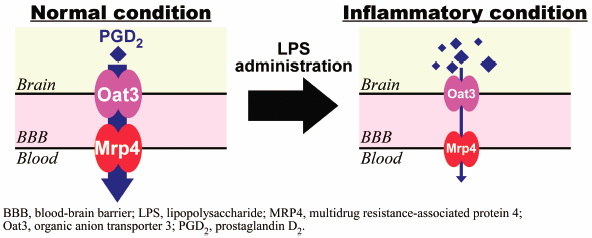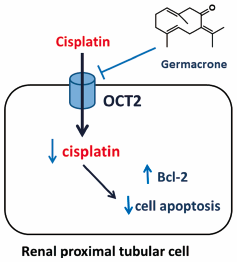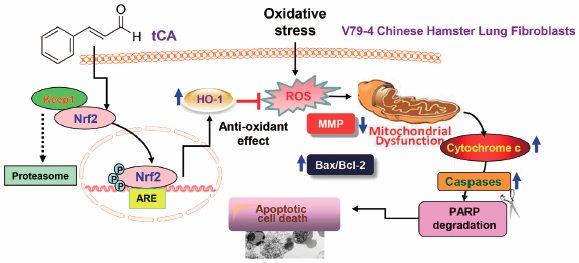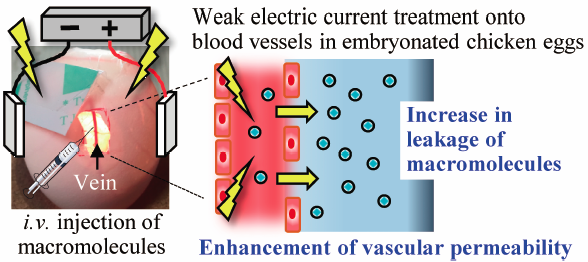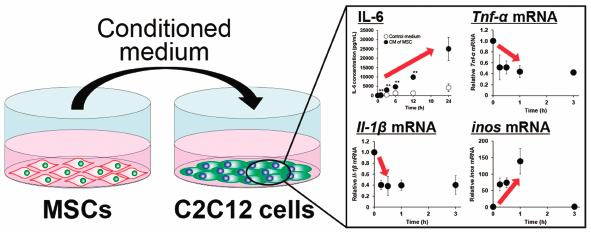- |<
- <
- 1
- >
- >|
-
 2020Volume 43Issue 11 Pages 1617-1625
2020Volume 43Issue 11 Pages 1617-1625
Published: November 01, 2020
Released on J-STAGE: November 01, 2020
Editor's pickDNA/RNA-based medication is an ultimate strategy in the field of personalized medicine. The authors summarized the recent progress in the development of their original lipid-like material: SS-cleavable pH-Activated Lipid-like Material (ssPalm) as a platform of the DNA/RNA delivery system. The material forms a DNA/RNA-encapsulating nanoparticle with neutral charge, and it confer the endosomal escape, and subsequent release of their encapsulating cargos to the cytoplasm. Also, the trafficking and physiological functions of the particles can be controlled by the changing of the hydrophobic structure. Furthermore, the transfection activity was highly improved by the insertion of self-degradable linker. The authors summarized the concept and application of a series of ssPalm.
Download PDF (1995K) Full view HTML
-
2020Volume 43Issue 11 Pages 1626-1633
Published: November 01, 2020
Released on J-STAGE: November 01, 2020
Download PDF (1951K) Full view HTML -
2020Volume 43Issue 11 Pages 1634-1642
Published: November 01, 2020
Released on J-STAGE: November 01, 2020
Advance online publication: September 04, 2020Download PDF (3092K) Full view HTML -
 2020Volume 43Issue 11 Pages 1643-1652
2020Volume 43Issue 11 Pages 1643-1652
Published: November 01, 2020
Released on J-STAGE: November 01, 2020
Advance online publication: September 02, 2020Editor's pickSinomenine (SN), an alkaloid isolated from Sinomenium acutum, has been used therapeutically for arthritis in China over many years. Herein, it was found that SN dose-dependently increased SOCS3 expression levels and inhibited matrix metalloproteinases (MMPs) levels in human chondrocyte cells. SOCS3 expression was increased by SN blocked IL-1β-induced interaction between TRAF6 and TAK1, thereby culminating in the inhibition of MMPs levels. In addition, SN also inhibited IL-6-induced JAK2 and STAT3 phosphorylation. These findings provided a molecular basis for the potential application of SN and suggested that SN exhibited a cartilage protective property for the treatment of arthritis.
Download PDF (1934K) Full view HTML -
2020Volume 43Issue 11 Pages 1653-1659
Published: November 01, 2020
Released on J-STAGE: November 01, 2020
Advance online publication: August 28, 2020Download PDF (1320K) Full view HTML -
2020Volume 43Issue 11 Pages 1660-1668
Published: November 01, 2020
Released on J-STAGE: November 01, 2020
Download PDF (2550K) Full view HTML -
2020Volume 43Issue 11 Pages 1669-1677
Published: November 01, 2020
Released on J-STAGE: November 01, 2020
Download PDF (1166K) Full view HTML -
2020Volume 43Issue 11 Pages 1678-1686
Published: November 01, 2020
Released on J-STAGE: November 01, 2020
Download PDF (2640K) Full view HTML -
2020Volume 43Issue 11 Pages 1687-1692
Published: November 01, 2020
Released on J-STAGE: November 01, 2020
Download PDF (4705K) Full view HTML -
 2020Volume 43Issue 11 Pages 1693-1698
2020Volume 43Issue 11 Pages 1693-1698
Published: November 01, 2020
Released on J-STAGE: November 01, 2020
Editor's pickNephrotoxicity induced by chemotherapy is common and limits the use of anticancer drug especially cisplatin. To improve the therapeutic efficiency of cisplatin, minimizing nephrotoxicity is very important. The present study investigated whether germacrone, a bioactive compound found in Curcuma species, has a protective effect on renal proximal tubular cells toxicity induced by cisplatin. The authors found that germacrone reduces cisplatin-induced cytotoxicity in renal proximal tubular cells by inhibition of OCT2-mediated cisplatin uptake into renal proximal tubular cells. This result suggests that germacrone may be a candidate agent for reducing nephrotoxicity during cisplatin chemotherapy.
Download PDF (658K) Full view HTML -
 2020Volume 43Issue 11 Pages 1699-1706
2020Volume 43Issue 11 Pages 1699-1706
Published: November 01, 2020
Released on J-STAGE: November 01, 2020
Editor's pickLubiprostone is an effective drug for various types of constipation in patients without cancer; however, efficacy and safety in patients with cancer have not been clarified. In the present study, Sada et al. retrospectively compared the efficacy and safety of lubiprostone on constipation in patients with and without cancer. It is shown that while lubiprostone was as effective in cancer patients as in non-cancer patients, in cancer patients it was associated with a high incidence of diarrhea and nausea side effects, especially in patients with a low body-mass index.
Download PDF (448K) Full view HTML -
2020Volume 43Issue 11 Pages 1707-1714
Published: November 01, 2020
Released on J-STAGE: November 01, 2020
Download PDF (2052K) Full view HTML -
2020Volume 43Issue 11 Pages 1715-1728
Published: November 01, 2020
Released on J-STAGE: November 01, 2020
Download PDF (3103K) Full view HTML -
2020Volume 43Issue 11 Pages 1729-1734
Published: November 01, 2020
Released on J-STAGE: November 01, 2020
Download PDF (1042K) Full view HTML -
2020Volume 43Issue 11 Pages 1735-1741
Published: November 01, 2020
Released on J-STAGE: November 01, 2020
Download PDF (485K) Full view HTML -
2020Volume 43Issue 11 Pages 1742-1748
Published: November 01, 2020
Released on J-STAGE: November 01, 2020
Download PDF (515K) Full view HTML -
2020Volume 43Issue 11 Pages 1749-1759
Published: November 01, 2020
Released on J-STAGE: November 01, 2020
Advance online publication: September 04, 2020Download PDF (5774K) Full view HTML -
2020Volume 43Issue 11 Pages 1760-1766
Published: November 01, 2020
Released on J-STAGE: November 01, 2020
Download PDF (3032K) Full view HTML -
2020Volume 43Issue 11 Pages 1767-1775
Published: November 01, 2020
Released on J-STAGE: November 01, 2020
Download PDF (701K) Full view HTML -
2020Volume 43Issue 11 Pages 1776-1784
Published: November 01, 2020
Released on J-STAGE: November 01, 2020
Download PDF (4558K) Full view HTML -
2020Volume 43Issue 11 Pages 1785-1791
Published: November 01, 2020
Released on J-STAGE: November 01, 2020
Download PDF (770K) Full view HTML -
 2020Volume 43Issue 11 Pages 1792-1798
2020Volume 43Issue 11 Pages 1792-1798
Published: November 01, 2020
Released on J-STAGE: November 01, 2020
Editor's pickXanthine and hypoxanthine are intermediate metabolites of uric acid formation and a source of reactive oxidative species (ROS) by xanthine oxidoreductase (XOR). They are reabsorbed in renal proximal tubules, but the mechanism has not been clarified yet. This study showed that xanthine is reabsorbed in the same manner as uric acid through uric acid transporters URAT1 and GLUT9, while hypoxanthine is not. Accordingly, it is expected that treatment with URAT1 inhibitor along with XOR inhibitor will effectively decrease purine pools in the body by suppressing reabsorption of xanthine increased by XOR inhibitor, thereby preventing cell injury due to ROS generated during XOR-mediated reactions.
Download PDF (647K) Full view HTML
-
2020Volume 43Issue 11 Pages 1799-1803
Published: November 01, 2020
Released on J-STAGE: November 01, 2020
Download PDF (575K) Full view HTML -
2020Volume 43Issue 11 Pages 1804-1809
Published: November 01, 2020
Released on J-STAGE: November 01, 2020
Advance online publication: September 01, 2020Download PDF (1241K) Full view HTML -
2020Volume 43Issue 11 Pages 1810-1813
Published: November 01, 2020
Released on J-STAGE: November 01, 2020
Download PDF (995K) Full view HTML
- |<
- <
- 1
- >
- >|






